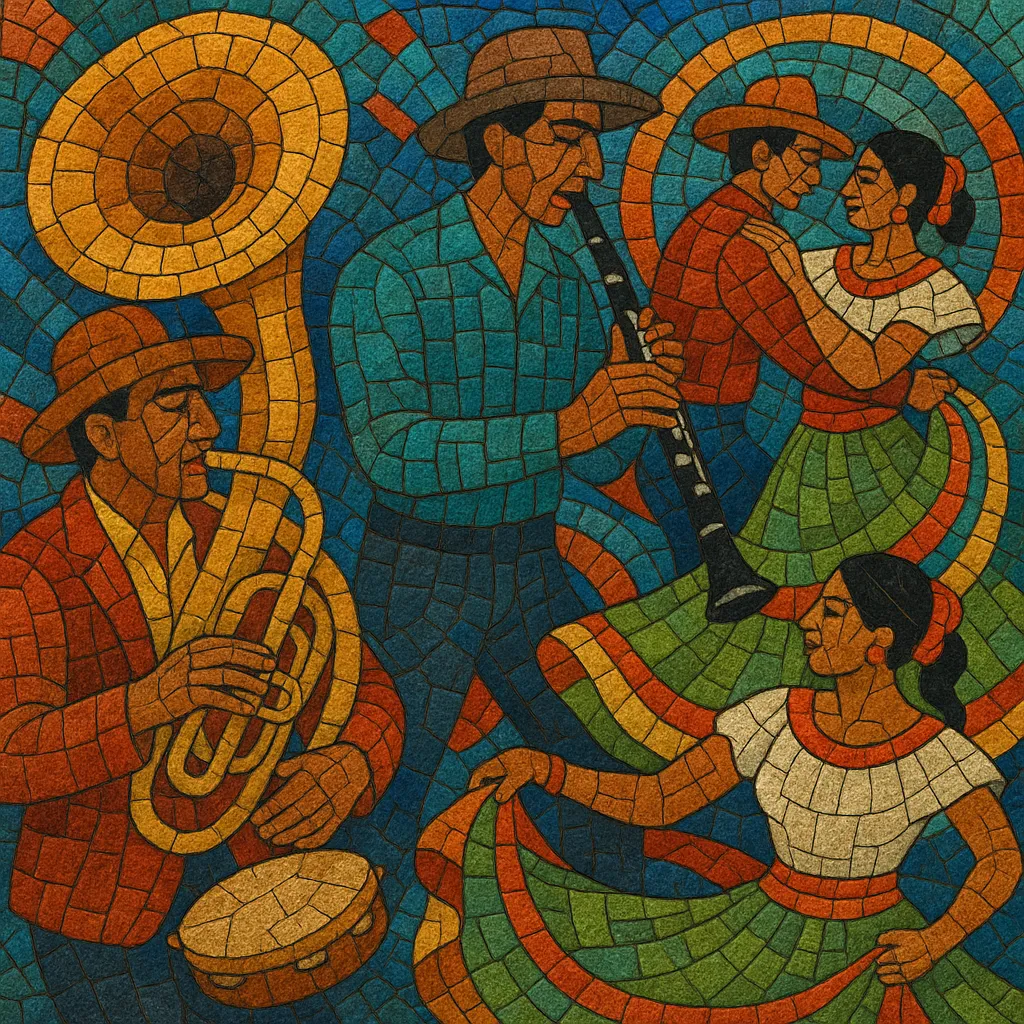Merequetengue is a lively Mexican dance-music style associated with the Isthmus of Tehuantepec and neighboring southern regions, where brass-and-woodwind bandas and marimba ensembles perform it for community fiestas, processions, and social dances.
Its feel is buoyant and playful, driven by sesquialtera (the characteristic interplay of 6/8 and 3/4) and bright, hummable melodies. Arrangements typically feature clarinets and saxophones doubling lively tunes over a tuba or bass line, with snare (tarola), bass drum, and hand percussion propelling a steady, danceable pulse.
While individual pieces often carry the title “El merequetengue,” the term has also come to denote a festive, whirlwind atmosphere—fitting the music’s energetic, good-humored character, quick footwork, and call-and-response shouts heard on the dance floor.
Merequetengue took shape within the broader son traditions of southern Mexico—especially the Isthmus of Tehuantepec—where local dance repertoires absorbed European ballroom forms such as the waltz and polka, alongside Cuban and Caribbean influences arriving through Gulf ports. Brass-and-woodwind town bands and marimba orquestas were central community institutions, and their repertories gradually crystallized a brisk, playful dance number known colloquially as “merequetengue.”
Throughout the 1900s, municipal bandas, school bands, and marimba ensembles popularized merequetengue in patron-saint festivities, weddings, and communal dances. The style’s hallmarks—sesquialtera swing, bright parallel horn lines, and shouted dance cues—made it a dependable crowd-pleaser. Radio and regional recordings helped fix “El merequetengue” as both a specific tune title and a shorthand for a spirited local dance.
With the late-20th-century revival of regional Mexican traditions, Oaxacan and Chiapaneco ensembles continued to program merequetengue in concert and festival contexts. University and community bands, marimba orquestas, and touring regional orchestras keep it active today, sometimes updating voicings or percussion while preserving the rhythm’s buoyant, hemiola-driven feel.


